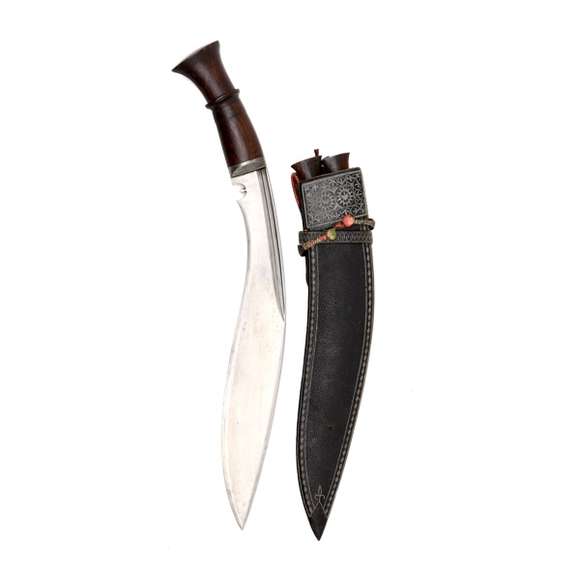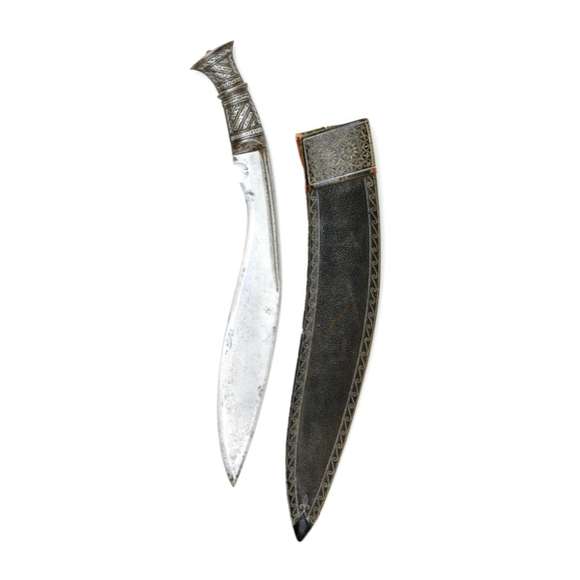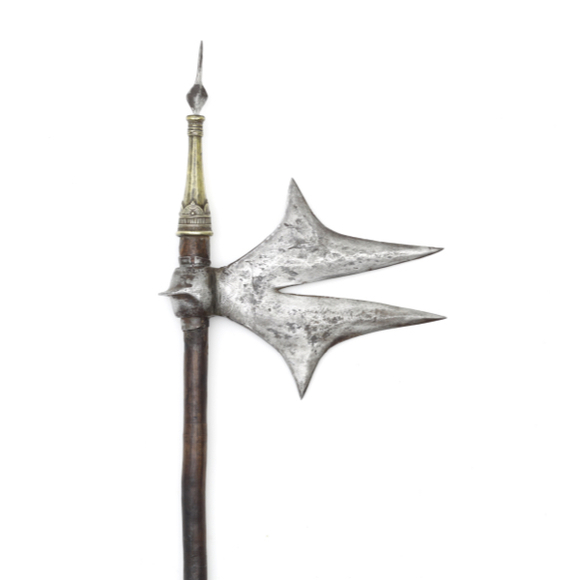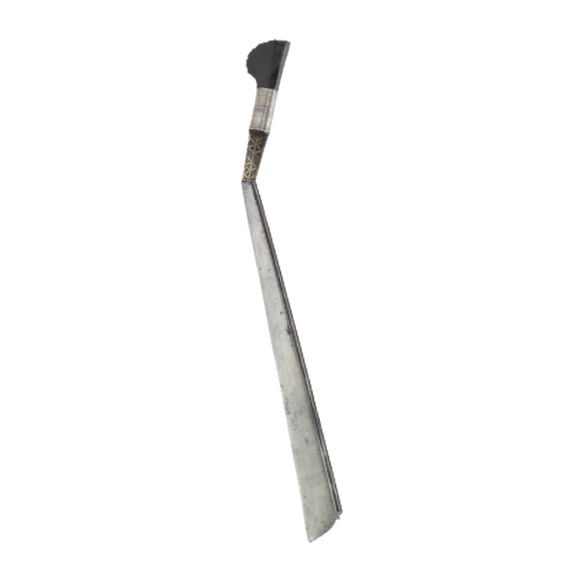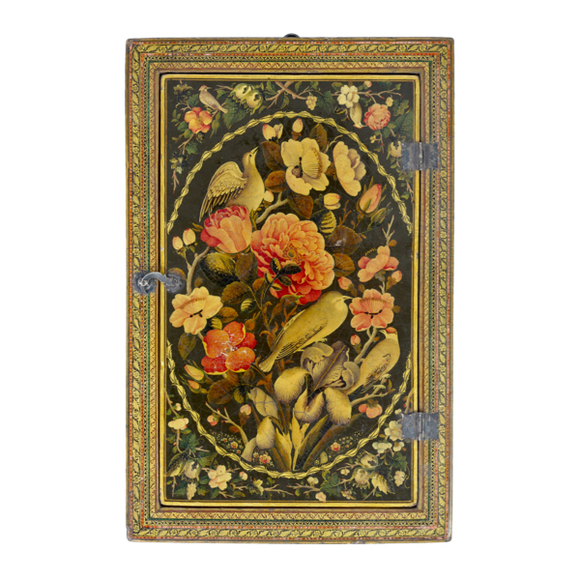An understated, elegant khukuri of substantial proportions with fine layered blade.

Sheathed 32.8 cm
Dagger 29.5 cm
17.7 cm
Base 2.3 mm
5 cm from tip 1.3 mm
Base 26.5 mm
5 cm from tip 18 mm
282 grams
At thickening in grip under guard
Iron, steel, brass, leather, plant fiber thread
Hindu Kush, Afghanistan
19th century
From a European collection
Introduction
The first description of such daggers known to me is by Egerton, he calls them jamdhar kátári and attributes them to Nepal.1
The name combines two names that are also given to the Indian push dagger, commonly known as katar but often described as jamdhar, primarily in older Mughal sources. (Also see glossary article: katar.)
Daggers of this form appear among others on stone reliefs in Mukteśwara, a 10th-century Hindu temple dedicated to Shiva located in Odisha, India.2
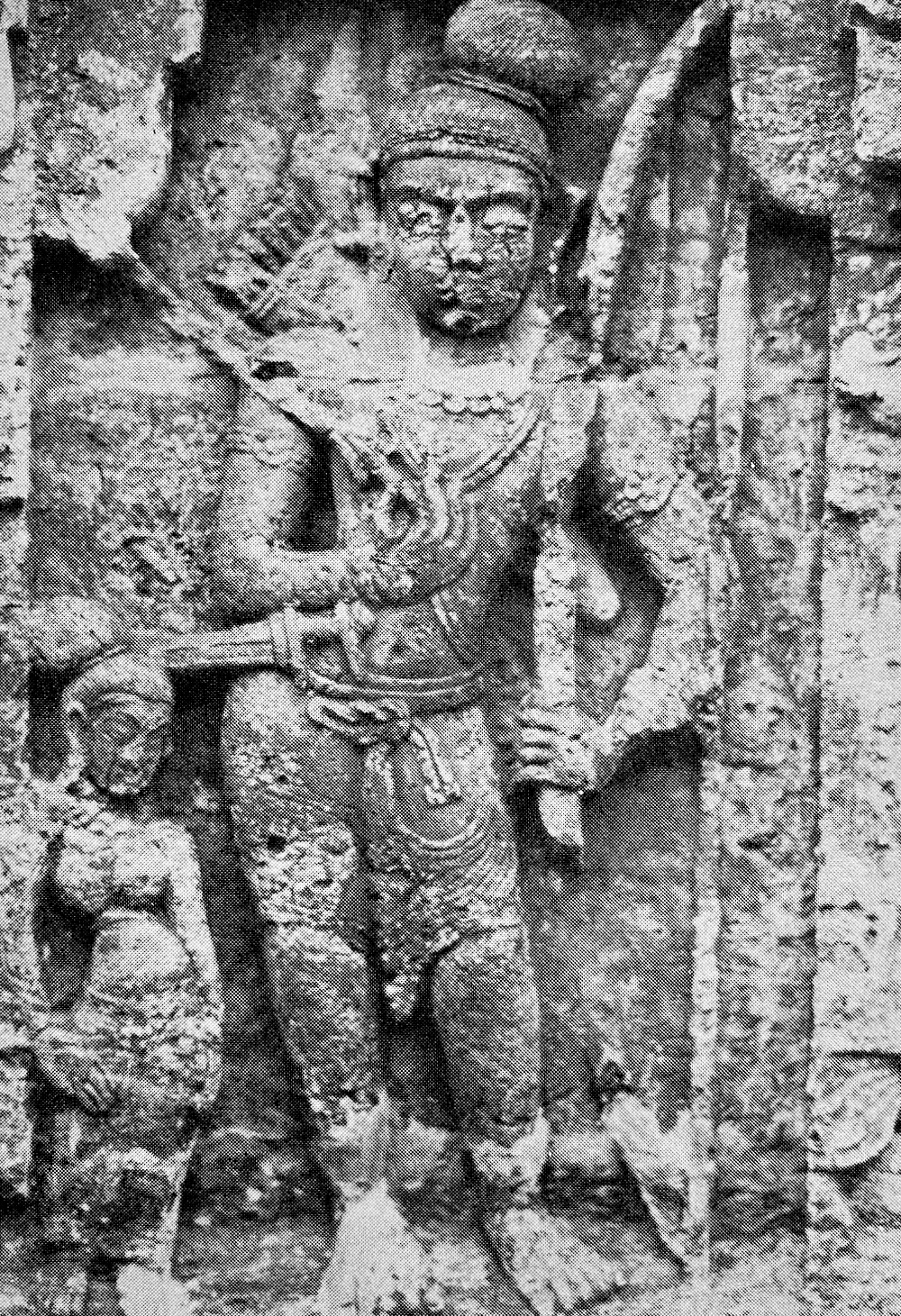
A similar dagger worn by a warrior. 10th century.
Mukteśwara temple. Odisha, India.
A variation of it seems depicted in the Ain-i-Akbari (Persian: آئینِ اکبری) or "Administration of Akbar" of circa 1590 and described as a katarah.

Daggers in the Ain-I-Akbari. Numbers added by me.
The katarah appears next to number 6.
The form somehow survived longer in the Hindu Kush in present-day Afghanistan than anywhere else. They were used among the Kalash people, also known locally as Kafir (pagan) because they practiced an early form of Hinduism.3

A similar dagger worn by a Kalash man, Hindu Kush area.
Illustrated London News, March 30, 1963.
"At the pshala Kafir is always on the look-out for thieves and enemies day and night. He never takes off his dagger, even at night, and during the day may constantly be seen watching his property fully armed with matchlock and other weapons." 4
-Sir George Scott Robertson, 1900
Notes
1. Lord Egerton of Tatton: Indian and Oriental Arms and Armour. Dover Publications; Revised edition, 2002. Plate IX & page 102, number 345.
2. Thomas E. Donaldson; Hindu Temple Art of Orissa, Volume Three. Leiden, Brill. 1987. Figure 4260.
3. Dmitry Miloserdov; Edged Weapons of Afghanistan: 19th-early 20th c. 2019. Pages 294-297.
4. Sir George Scott Robertson; Kafiristan and its people. 1900. Page 38.
This example
A good, complete example of the typical Afghan jamdhar kátári (for lack of a better word). It has the characteristic hilt with wide pommel and guard in an H shape. The blade is slightly curved, double edged with two faded grooves on either side. The pommel is carved with two stylized facing animals, very archaic in style.
The orthodox nature of the dagger can also be seen when looking at the blade-hilt junction: The blade held by langets to which it is riveted with two iron rivets. The langets are in turn are held by rods that go through the guard and are peened on the other side. A similar construction can be seen on Vijayanagara katar of the 16th century.
Muhammad Hayat Khan Khattar (1833–1901) is depicted wearing one of these daggers in a lithograph that was published in the Illustrated London News in 1879.1 He was awarded the Most Exalted Order of the Star of India for his service.
The scabbard has a wooden core that is encased in steel.
Notes
1. Dmitry Miloserdov; Edged Weapons of Afghanistan: 19th-early 20th c. 2019. Page 298.






With iron, silver overlaid hilt. Its associated scabbard features fine quillwork.
This peculiar sword was used by the Garo people of Assam for fighting, clearing the jungle, and animal…
Made of pasteboard, finely lacquered with roses and nightengales.

